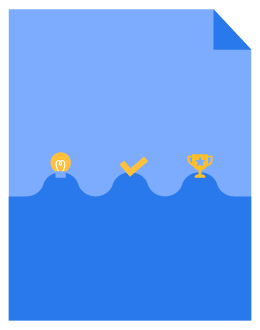Decision Stage: Techniques to Close a Sale


Tim Edwards
This post was originally published in January 2019 and has been updated for accuracy and comprehensiveness.
The decision stage of the B2B buyer’s journey indicates that your buyer is ready to decide whether to purchase your product or service. In this stage, you should focus your efforts on convincing the prospect to make the purchase. By now, you should have already established a trusting relationship, which will help them see that your solution is the best option for them.
Continue reading to see how you can continue to nurture your prospects through the decision stage.

Download the Ultimate Guide to the B2B Buyer’s Journey
With our guide, you will learn how to help your potential customers through the five stages of their buyer’s journey.
Value-based selling techniques
All of the steps your salesperson has taken to lead the prospect to this point allow the salesperson to thoroughly understand the prospect’s needs, organizational barriers, and any additional decision-makers who need to be persuaded. The buyer is sales-qualified by an SDR, has been converted to a qualified opportunity, and now relies on your closer to communicate how your solution can solve their problem.
We recommend investing in a CRM to make this process a bit easier for your salespeople. This will help keep track of every prospect and allow your salespeople to add relevant notes that may influence future touch-point conversations.
Utilizing product demos and case studies is a great tool for your sales reps to show how your solution has been successful and will help with your buyer’s current pain points. These are also great resources for the buyers to access to show fellow stakeholders valuable proof to help them make the final decision.
To reach a closed sale, the sales rep should use everything they have learned about the client thus far to continuously highlight the benefits of your solution that will most align with their needs.
It’s also important to help the buyer understand that if they do make the purchase, the implementation of the solution will be as seamless as possible. Show this by mapping out a simple onboarding process so they have a tangible set of expectations.
Decision making barriers
When it comes to B2B sales, the decision to make a purchase is usually made by a team of stakeholders who are dealing with many complexities. This is why we highlight the importance of thinking of the entire buyer’s journey process.
Salespeople should prioritize assisting buyers throughout the journey, acknowledging the barriers they must overcome before making a final purchase.
B2B buyers have to consider the following when making a decision:
- Their overall budget for this particular decision
- Any internal objections to making this purchase
- How they will strategize the implementation of this solution
Salespeople should consider this and offer resources for these concerns while still selling them on your initial offer.

Subscribe to EBQ's Bimonthly Newsletter

Subscribe to EBQ's Bimonthly Newsletter
Successful marketing strategies for the decision stage
Marketing strategies during the decision stage should be used to lead the prospect to the bottom of the sales funnel and convert them into paying customers. Your sales team should be front and center, doing the hands-on work, while your marketing team works behind the scenes to ensure the messaging toward the buyer stays consistent.
Marketing collateral for this stage of the buyer's journey includes:

- Case studies
- White papers
- Datasheets
- Website landing pages
For this marketing collateral to resonate with the buyer, the team should ensure that the content is consistently attractive, lends credibility, and addresses the buyer’s unique pain points. In order to successfully lead the prospect further down the funnel, they need to fully understand and trust that your offer is a good solution and relates to their needs.
Specialized roles to enhance the sales process
As your company grows and enters larger markets, it becomes essential to specialize your B2B sales roles. Implementing an SDR/AE model to split the sales cycle into two roles: the sales development representative and the account executive. The SDR team should operate as an all-bound function to boost conversions.
Assigning different aspects of the sales process to specialized roles will help enhance the experience of both the customer and your employees. If you have a smaller company or run into an area of expertise that your services don’t cover, an outsourced inside sales team is a great option to help round out the team.
Delegating specialized roles will allow your sales reps to focus on closing deals instead of finding new leads. SDRs help at the top and middle of the sales funnel, saving the closers time and energy. A specialized team for the onboarding process also helps ensure new customers have a good experience in the growth and delight stages of their journey.
Using dedicated teams will help your employees balance their responsibilities and allow the sales team to focus on obtaining new clients. This will allow your team to become experts in their roles and begin to perform better.

Download the Ultimate Guide to the B2B Buyer’s Journey
With our guide, you will learn how to help your potential customers through the five stages of their buyer’s journey.
Continue building and maintaining client relationships
Taking the necessary steps to guide your prospect through the decision stage will help you close a sale. Building the necessary marketing collateral to ensure your prospect is confident in their decision and feels supported by your company. As you begin to strategize your content marketing to nurture your prospects, consider outsourcing your content marketing tasks, so your team can continue focusing on building a trusting relationship with your prospect.
In the next chapter, we will dive into the growth stage. Often overlooked in the buyer’s journey, it’s one of the most important steps to retain loyal customers and continue fostering a trusting business relationship.

